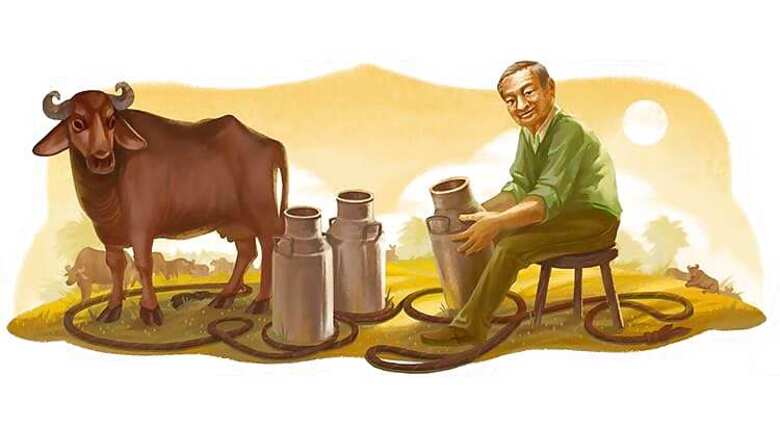
views
The doodle on the Google India home page on Verghese Kurien's 94th birth anniversary shows the 'Milkman of India' with a milk can in his hand as a buffalo looks on and a looped rope lying on the ground spells 'Google'.
(Also read: 15 amazing facts about the much-loved Amul Butter ads)
Kurien brought milk revolution in the country and made the ordinary, neighbourhood 'doodhwala' (milkman) a key player in the country's struggle for economic development and progress at the grassroot level.
He was instrumental in laying the foundation of democratic enterprises at the remote villages and farflung hamlets which ensured economic justice. And it was with people's voluntary participation.
Honoured as the architect of India's White Revolution, which catapulted India to be the world's largest milk producer, Kurien managed the feat in the 1970s at a time when it faced grim uncertainties over its food security.
Kurien, the founder-chairman of National Dairy Development Board (1965-98) and also chairman of Gujarat Co-Operative Milk Marketing Federation Ltd (GCMMF)(1973-2006), and also the Institute of Rural management (1979-2006).
Born on November 26, 1921 in Kozhikode, Kerala, Kurien - who was destined to become India's top 'milkman' - graduated from Loyola College in 1940 and later completed his engineering from Guindy College of Engineering, Chennai. But it was after a brief stint at TISCO that he obtained a government of India scholarship to study dairy engineering.
Having acquired specialised training at the Imperial Institute of Animal Husbandry and Dairying in Bangalore, Kurien went to the US and completed his masters in Mechanical Engineering with dairy engineering as a minor subject from the Michigan State University, in 1948.
A year later, he was assigned to a Government Creamery in Anand, Gujarat as part of his bond commitment.
Arriving in Anand on a hot May 13 in 1949, Kurien was a harried man, only waiting to be released from his bond and leave the place as quickly as possible.
He got his release orders after six months and was all set to pack up and go to the city of big bucks, Bombay (now, Mumbai) - but a minor incident halted him in his tracks.
Just as he was preparing his exit, Tribhuvandas Patel, the then chairman of Kaira District Co-operative Milk Producers Union, popularly known as 'Amul', with whom Kurien had developed a good friendship, requested him to stay back in Anand for some more time and help him organise his co-operative society's dairy equipment.
Kurien stayed back for a few more days...going on to become a legend through Operation Flood, launched in 1971.
The Dairy co-operative movement had a modest beginning with the first Dairy Co-operative Union in Gujarat formed in 1942 with only two village co-operatives joining as members.
Around 65 years later that figure has grown to a staggering 16,100 with 3.20 million milk producers pouring millions of tonnes of milk into the GCMMF containers twice daily.
The NDDB, formed by Kurien's efforts, replicated the Amul Model all over India with remarkable results which dramatically increased the country's milk production.
Through Kurien's efforts vide the Amul Model, the country's milk production shot up from a mere 20 million metric tonnes (MMT) per annum in 1960 to a whopping 122 MMT last year.
The GCMMF's average daily milk production rose from 2.50 million kgs to 12.5 million kgs during the same period.
Kurien's main contribution was to design systems and institutions, which people could develop themselves, as he believed development of man can best be achieved by putting in his hands the instruments of development.
He proved it by the Operation Flood in 1971 - creating a national milk grid - which was implemented in three phases.
Not only did it result in making India the world's largest producer of milk and milk products, it also helped reduce malpractices by milk producers and merchants, and alleviated poverty during that era.
The world took note of Kurien's efforts and showered honours on him, including India's Padma Vibhushan, the World Food Prize, Magsaysay Award, Carnegie-Wateler World Peace Prize, International Person of Year from US and other recognitions, for his work that touched millions of lives everyday in remote areas.
Verghese Kurien died on September 9, 2012 in Nadiad, Gujarat. He was 90.
(With inputs from IANS)

















Comments
0 comment